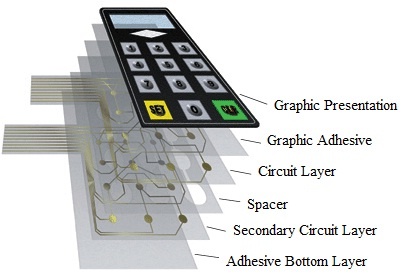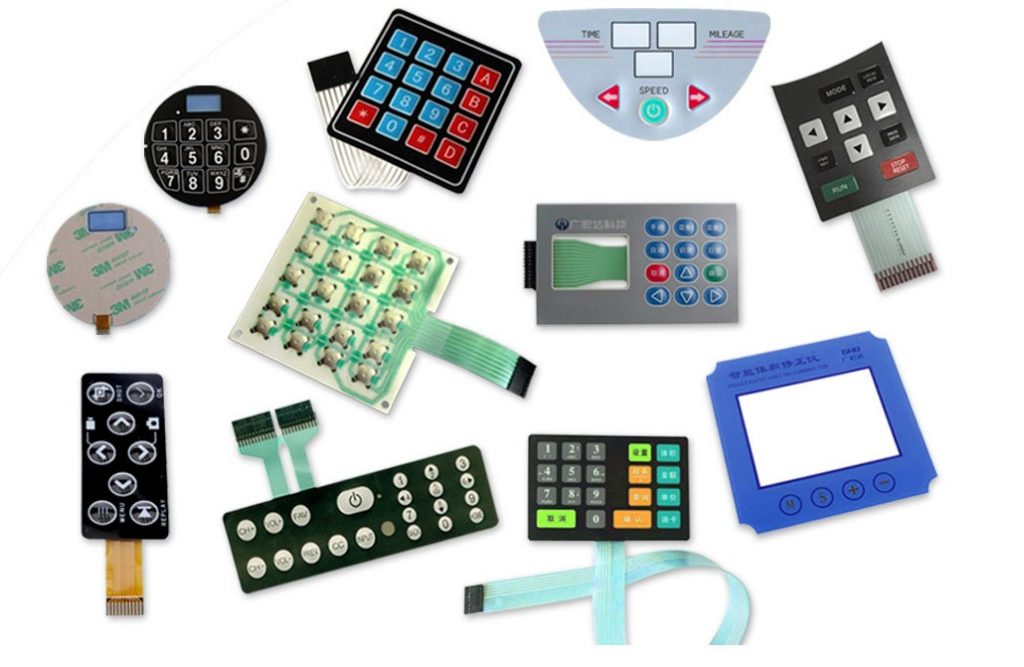Comprehending the Importance of Membrane Change in Modern Electronic Devices
Membrane switches are indispensable components in contemporary digital tools. They supply a blend of performance and style that enhances customer interaction. Their light-weight and resilient nature makes them ideal for various applications. As sectors progress, the need for customization and advanced attributes expands. Recognizing exactly how membrane layer switches add to development reveals their importance fit the future of electronics. What lies ahead for this technology?
The Essentials of Membrane Layer Switch Innovation
Although frequently forgotten, membrane layer button technology plays a crucial duty in the contemporary electronics landscape - membrane switch. These tools, made up of multiple layers, offer as customer interfaces for various digital items, varying from home home appliances to medical tools. A typical membrane layer button contains a visuals overlay, a spacer layer, and a circuit layer, which are meticulously assembled to create a practical interface.When pressure is applied to the overlay, the circuit layer is finished, allowing signals to be transferred to the tool. This technology is understood for its flexibility, making it possible for customization in layout, capability, and shape to meet specific individual needs. Furthermore, membrane switches are lightweight and slim, making them suitable for applications where space is a costs. Their longevity and resistance to ecological variables further enhance their allure, guaranteeing they can withstand severe problems while maintaining performance. On the whole, membrane switch modern technology is integral to developing straightforward and reliable digital devices

Secret Advantages of Membrane Changes
Membrane switches deal numerous vital benefits that make them a recommended choice in numerous digital applications. Their style enables a small kind element, enabling makers to create light-weight and smooth tools. Additionally, membrane layer buttons are immune to dust, moisture, and chemicals, which boosts their durability and longevity popular settings. The tactile responses provided by these buttons can enhance user experience, making them intuitive and easy to operate.Furthermore, membrane layer buttons can be personalized with diverse graphics and shades, permitting for special branding chances. The production process is normally affordable, specifically for high-volume manufacturing, as it reduces setting up time and streamlines style. Lastly, membrane layer switches over require marginal maintenance, contributing to lower total operational expenses. These benefits emphasize their growing popularity in contemporary electronics, where reliability and straightforward interfaces are important.

Applications Throughout Numerous Industries
The flexibility of membrane layer switches over allows their extensive fostering throughout various sectors. In the clinical area, they are commonly used in diagnostic devices and individual tracking systems, offering a durable user interface immune to pollutants. The auto sector uses membrane buttons for control panel controls, improving individual experience with smooth styles that hold up against severe conditions. In customer electronic devices, they function as control board for tools such as microwaves and coffee machine, supplying an user-friendly interface that is very easy to tidy. The aerospace sector employs membrane layer buttons in cabin controls, where integrity and room effectiveness are extremely important. Additionally, the industrial sector leverages these switches in machinery and control systems to assure durable procedure in requiring atmospheres. This broad array of applications highlights the adaptability of membrane layer switches, making her explanation them important components in boosting capability and customer communication throughout varied technological landscapes.
Customization and Design Versatility

Future Patterns in Membrane Layer Change Growth
Arising patterns in membrane layer button development indicate an expanding focus on improved performance and combination with clever modern technologies. As customer demand for extra sophisticated electronic devices rises, producers are concentrating on developing membrane switches over that not only serve fundamental functional functions however additionally integrate functions like touch level of sensitivity, backlighting, and haptic feedback.Furthermore, improvements in products are anticipated to boost durability and environmental resistance, making membrane layer switches ideal for diverse applications in sectors such as healthcare, automotive, and consumer electronics. The combination of capacitive touch modern technology is most likely to end up being much more widespread, permitting sleeker styles and enhanced user interfaces. membrane switch.Additionally, the rise of the Internet of Things (IoT) is triggering the development of membrane changes that can connect wirelessly with other gadgets, boosting interconnectivity. On the whole, the future of membrane layer button technology appears appealing, driven by development and the search of easy to use solutions
Regularly Asked Concerns
Exactly How Do Membrane Layer Switches Over Contrast to Typical Mechanical Switches?
Membrane switches, being extra space-efficient and providing a smooth design, contrast with standard mechanical switches that provide tactile feedback. The previous typically feature adjustable graphics, while the latter normally ensure longevity and dependability in numerous applications.
What Products Are Generally Made Use Of in Membrane Layer Switch Manufacturing?
Membrane switches are usually created utilizing materials such as polyester, polycarbonate, and published conductive inks. These products provide toughness, flexibility, and responsiveness, making them suitable for numerous applications in electronic tools and interface.
Can Membrane Layer Changes Be Fixed or Reused?
Membrane buttons can often be fixed, specifically if minor problems arise, such as adhesive failure or surface damage. Nonetheless, complete reuse is normally limited as a result of put on and potential degradation of materials with time.
Just How Do Ecological Factors Affect Membrane Change Performance?
Environmental aspects, such as moisture, temperature, and exposure to chemicals, significantly influence membrane layer button efficiency. Severe problems can result in deterioration, impacting responsiveness and longevity, ultimately compromising the capability of the tool in numerous applications.
What Is the Typical Life-span of a Membrane Change?
The typical lifespan of a membrane button usually ranges from 1 to 5 million actuations, depending upon elements such as usage frequency, ecological problems, and the products utilized in production, impacting toughness and efficiency long life. A regular membrane button is composed of a graphic overlay, a spacer layer, and a circuit layer, which are carefully assembled to produce a practical interface - membrane switch.When pressure is used to the overlay, the circuit layer is finished, permitting signals to be transmitted to the device. The tactile responses offered by these switches can improve individual experience, making them instinctive and simple to operate.Furthermore, membrane switches can be personalized with varied graphics and shades, allowing for special branding possibilities. As consumer need for a lot more sophisticated electronic devices rises, manufacturers are focusing on producing membrane switches that not just offer fundamental functional functions however likewise integrate features like touch sensitivity, backlighting, and haptic feedback.Furthermore, advancements in materials are anticipated to boost durability and ecological resistance, making membrane switches appropriate for diverse applications in industries such as health care, automotive, and consumer electronics. The assimilation of More Help capacitive touch technology is likely to become much more prevalent, permitting for sleeker styles and enhanced customer interfaces.Additionally, the surge of the Internet of Things (IoT) is prompting the development of membrane layer changes that can communicate wirelessly with other devices, boosting interconnectivity. websites Membrane layer switches, being extra space-efficient and using a sleek style, comparison with standard mechanical buttons that offer responsive feedback